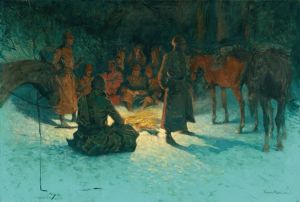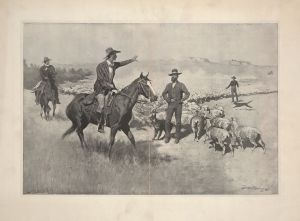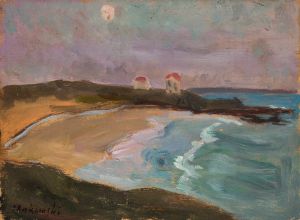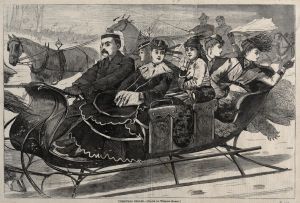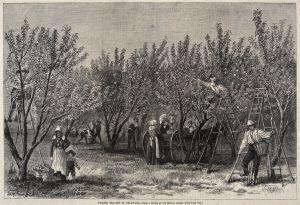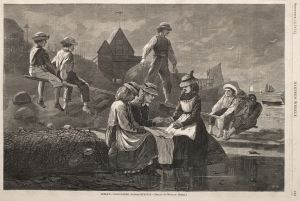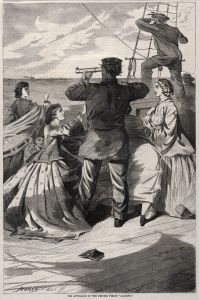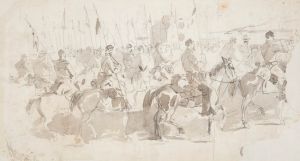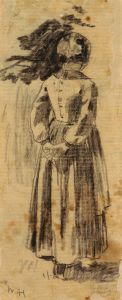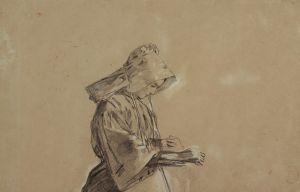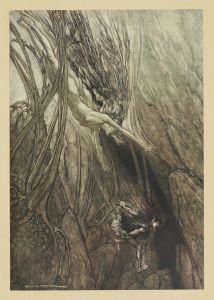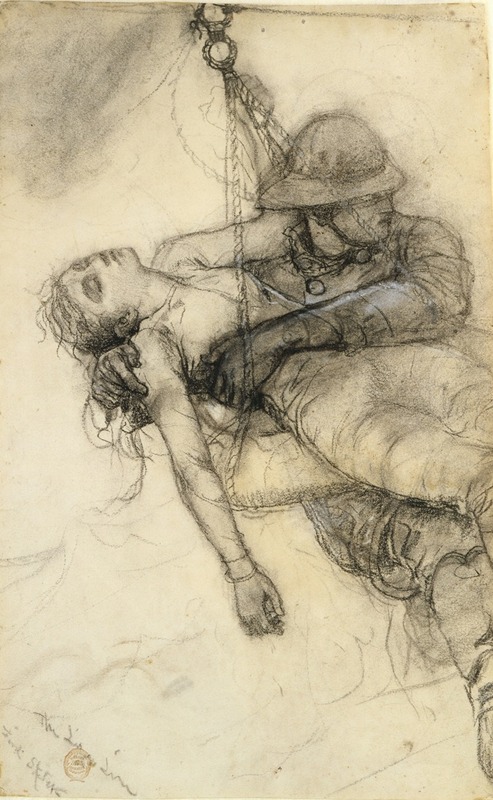
Study for ‘The Life Line’
A hand-painted replica of Winslow Homer’s masterpiece Study for ‘The Life Line’, meticulously crafted by professional artists to capture the true essence of the original. Each piece is created with museum-quality canvas and rare mineral pigments, carefully painted by experienced artists with delicate brushstrokes and rich, layered colors to perfectly recreate the texture of the original artwork. Unlike machine-printed reproductions, this hand-painted version brings the painting to life, infused with the artist’s emotions and skill in every stroke. Whether for personal collection or home decoration, it instantly elevates the artistic atmosphere of any space.
Study for ‘The Life Line’ is a preparatory work by the American artist Winslow Homer, created in 1883. This study was part of Homer’s process in developing his larger and more famous painting, The Life Line, which depicts a dramatic sea rescue scene. Winslow Homer, known for his mastery in portraying maritime themes and the power of nature, used studies like this one to refine his compositions and experiment with elements such as light, color, and form.
The study reflects Homer’s interest in the heroism and peril associated with life at sea, a recurring theme in his body of work. It showcases his attention to detail and his ability to capture the tension and drama of a life-saving moment. The artwork likely served as a preliminary exploration of the figures, poses, and overall composition that would later appear in the final painting.
Homer’s The Life Line and its preparatory studies are often associated with the artist’s time spent in coastal areas, particularly in New England and Cullercoats, England. These locations provided him with firsthand exposure to the lives of fishermen, sailors, and the dangers they faced. His works from this period often highlight the relationship between humans and the sea, emphasizing themes of survival, courage, and the forces of nature.
The study itself is executed with a focus on the central figures and their interaction, though it may lack the full detail and polish of the final painting. It demonstrates Homer’s process of working through ideas and refining his vision before committing to the larger, finished piece. The use of preparatory studies was a common practice among artists of Homer’s time, allowing them to experiment and resolve compositional challenges.
Winslow Homer’s works, including Study for ‘The Life Line’, are celebrated for their emotional depth and technical skill. They continue to be studied and admired for their contribution to American art and their vivid portrayal of human resilience in the face of nature’s power. The study is an important piece in understanding Homer’s artistic process and his ability to convey dramatic narratives through his art.





